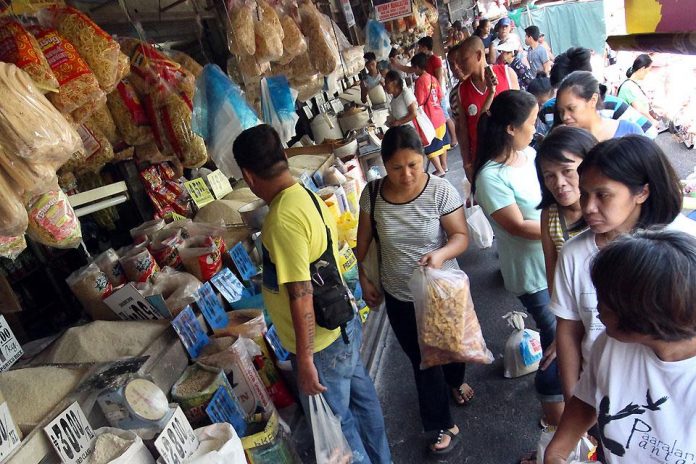
MANILA – Headline inflation stayed at 6.7 percent in October but declined month-on-month, with the downward path indicating that concerted government efforts to tame rising prices have been bearing fruit.
The Philippine Statistics Authority on Tuesday reported that seasonally adjusted month-on-month inflation eased further to 0.3 percent last month since it peaked in August.
Higher annual increases were observed in the indices of transport; housing, water, electricity, gas and other fuels; health; furnishing, equipment and routine maintenance of the house; and restaurant and miscellaneous goods and services.
Slowdowns in the annual increments were, however, seen in the indices of food and non-alcoholic beverages at 9.4 percent, and alcoholic beverages and tobacco, 21.6 percent.
The government’s top economic managers particularly cited the issuance of Administrative Order No. 13 removing restrictions on the importation of agricultural products, in a bid to boost food supply and bring down the price of staple food items.
“And such promising results further motivate the economic team to work closely with all concerned government agencies to more aggressively implement mitigating measures to ease inflation over the medium- and long-term,” they said in a joint statement.
The National Economic and Development Authority, Department of Finance and Department of Budget and Management said the government will continue to focus on food, including rice, which remains to be the major contributor to inflation even as its price decelerates.
Economic managers noted that the country’s rice imports, along with the rice inventory of the National Food Authority, continue to improve with the completion of the Philippines’ government-to-government procurement and the first phase of 2018 Minimum Access Volume.
They said the National Single Window System must be efficiently operationalized to ensure fast and efficient processing of imports.
“To compensate for the lost harvest in typhoon-affected areas, rice imports should be closely monitored to ensure that their arrival is timely and sufficient,” they added.
In a press briefing, National Statistician and PSA head Lisa Grace Bersales said regions hit by Typhoon Ompong – including Region 2 (Cagayan Valley), Cordillera Administration Region, and Mimaropa (Mindoro, Marinduque, Romblon and Palawan) – recorded higher inflation in October.
The government earlier reported that the damages and losses to the agriculture sector caused by the typhoon reached P26.77 billion, with those in rice contributing the largest share at P14.53 billion.
Economic managers further called on concerned government agencies, especially the Department of Agriculture, to speed up initiatives to distribute seed buffer stocks for rice, as well as corn and other high-value crops, in disaster-stricken areas in time for the planting season this November to January.
Bersales said food and non-alcoholic beverages contributed 55.4 percent to the overall 6.7-percent inflation in October.
Housing, water, electricity, gas and other fuels shared 16 percent, while transport contributed 10.8 percent, the PSA said.
Other commodity groups comprising the consumer price index (CPI) are alcoholic beverages and tobacco; clothing and footwear; health; furnishing, equipment and routine maintenance of the house; communication; recreation and culture; education; and restaurant and miscellaneous goods and services.
CPI is an indicator of the change in the average retail prices of a fixed basket of goods and services commonly purchased by households relative to a base year.
Meanwhile, last month’s adjustments in the overall price level in Metro Manila alone slowed down further to 6.1 percent, while inflation outside Metro Manila remained at 6.8 percent. ”If the government continues what it is doing now, inflation will continue to ease,” Bersales added.
Ateneo de Manila University economics professor Alvin Ang also believes that inflation is easing. “Inflation is possibly weakening already with NFA rice becoming available and affordable,” he said. (With PNA/PN)



